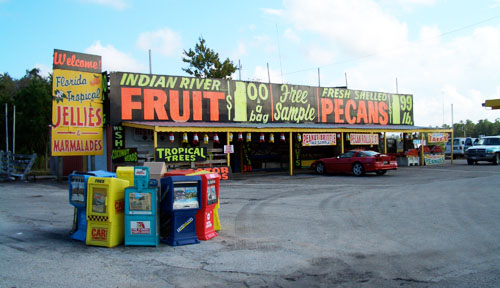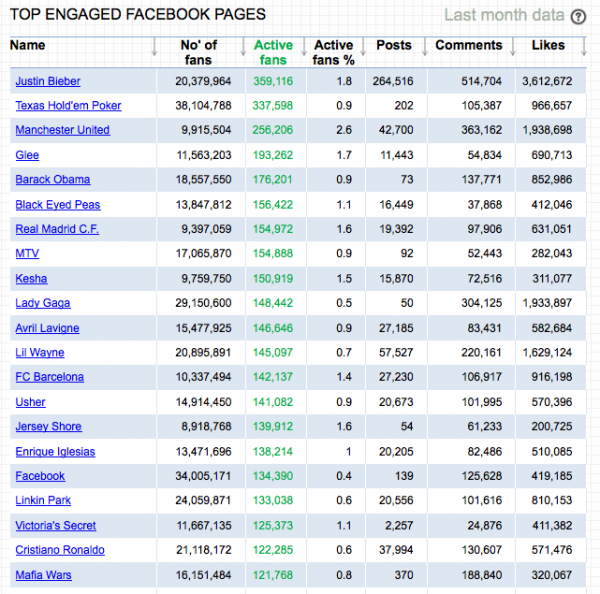von Roland Hachmann | Feb. 28, 2012 | Blog, Digital Marketing, Marketing, Marketing Trends, SEO / SEA, Social Media Marketing
Zur Zeit kommt keiner, der sich ernsthaft mit Social Media beschäftigt, an Pinterest vorbei, es scheint wahrlich der nächste heiße Sche*ss im Digital Advertising zu sein. Marken wie GAP, Whole Foods, Threadless und sogar General Electric probieren Pinterest bereits aus.

Die Referral-Raten (sprich: Website Traffic, den Pinterest für eine Marke generieren kann) sind angeblich ähnlich hoch wie bei Twitter und Google+. Jeder Link hat, so heißt es, jede Menge Google Juice, da es „Do Follow“ Links sind. Auch wenn das vermutlich nicht immer so bleiben wird.
Sogar der Spiegel schreibt drüber (natürlich kritisch, über die Urheberrechts Diskussionen) und hat das Thema einer breiteren, nicht ausschließlich Social Media affinen Öffentlichkeit näher gebracht. International wächst Pinterest rasant, im Januar 2012 hatte die Plattform bereits über 11 Millionen Besucher, laut Comscore.
Ist Pinterest einfach nur der nächste Hype?
Man muss dieses Jahr sicherlich mit noch sehr viel mehr Hype um diese Plattform rechnen. Denn neben der Tatsache, dass es eine von nur wenigen Anwendungen ist, die per Open Graph API in den Facebook streamen dürfen, spricht die einfache Usability und das optische ansprechende Nutzerinterface sehr für diese Seite.
Schliesslich dreht es sich in erster Linie um die Bilder einer gebookmarkten Website. Dadurch ähnelt die eigene Bookmarkliste nicht mehr einer Bleiwüste, sondern hat einen angenehm anzuschauenden Magazin-Charakter.
Damit ist Pinterest nicht nur ein weiterer Hype, sondern etabliert in meinen Augen ein völlig neues Nutzungsszenario für Link- und Bookmark-Sharing. Alles konzentriert sich sehr stark auf visuelle Eindrücke und Erinnerungen. Der Text einer Seite ist zweitrangig für das Bookmark.
Da das für viele Nutzer (angeblich eher Nutzerinnen) sehr ansprechend ist, wird es vermutlich nicht mehr lange dauern, bis andere Social Networks diese Form des Bookmarking adaptieren. Man kennt es ja in ähnlicher Form bereits von Facebook: wenn man auf Websites verlinkt, dann sucht sich Facebook ein Bild von dieser Seite als „Icon“ für den Link.
Was bedeutet das für Marken, Marketing und Werbung?

Der Social Media Examiner listet „26 Tips for using Pinterest for business“ auf, bei Mashable sind es immerhin 5 heiße Tips für Brands. Die sollte man sich durchlesen und einiges davon ausprobieren.
Die 3 wichtigsten Punkte aus meiner Sicht, die jeder sofort umsetzen kann (und sollte), selbst wenn man noch unsicher ist, ob Pinterest sich durchsetzen wird:
- Website Aufbau: Sollte das Beispiel von Pinterest Schule machen, dann wird es in Zukunft noch deutlich wichtiger, auf jeder Page einer Website ein „Icon“-fähiges Bild zum „pinnen“ zur Verfügung zu stellen. Kein Text mehr ohne interessantes Foto. Das typische Stockphoto nicht mehr aus, ebensowenig die Fotos aus dem Presseticker. Nur im wahrsten Sinne bemerkenswerte Bilder können ausreichend Aufmerksamkeit in den Boards finden.
- Präsenz auf Pinterest: warum nicht auf Pinterest mit eigenen Links / Bildern präsent sein? Dadurch ermöglicht man Usern ein Re-Pinning der Marken Fotos. Meine These: Schöne Bilder werden durchaus ge-re-pinned, egal, auf was der dahinterliegende Link verweist. Selten gab es eine bessere Möglichkeit für Unternehmen, Bildmaterial (und damit oft verbunden: Links) zu verbreiten. Ein Pinterest Profil mit verschiedenen Boards bestehend aus eigenen Fotos ist relativ schnell umsetzbar. Das jetzt nicht auszuprobieren wäre einfach dämlich.
- SEO: Die Links auf Pinterest sind zur Zeit anscheinend immer „Do Follow“ Links. Im Gegensatz zu vielen anderen Networks, die irgendwann auf „No Follow“ umgestellt haben. Ob Google’s Algorithmus sich bereits durch Pinterest inspirieren lässt, weiß natürlich keiner so genau. Aber Pinterest ist seit Ende 2009 online, es bestehen gute Chancen, dass diese Links tatsächlich Google Juice produzieren. Noch. Insofern sollte man schleunigst seine wichtigsten Seiten selbst „pinnen“. (Und natürlich vorher mit aussagekräftigen „pinn-fähigen“ Fotos versehen.)
(Hier findet Ihr meine Pinterest Boards)
von Roland Hachmann | Juni 30, 2011 | Blog, Digital Marketing, Marketing, Social Media Marketing
A question often asked. Here is an info graphic (click on the image to see the full size version):

von Roland Hachmann | März 18, 2011 | Blog, Digital Marketing, Social Media Marketing
You think „Fans“ on facebook, i.e. people liking your brand’s facebook page, are a useful currency for measuring success on the social web? Well, think again.
(First: the social web is more than just facebook.)
The number of fans is not a very relevant social web KPI, if they’re not active at least some of the time. Inactive fans might have shown some interest when „liking“ the facebook page. However, a large amount of inactive fans shows, that after an initial „liking“, engagement by the brand wasn’t very successful.
Hence, there is list of „top engaged facebook pages“ on facebook compiled by FanGager.
The idea: forget about the ranking of brand pages on facebook by „fans“, instead rank them by „active fans“. Nice approach, but when comparing success on facebook, I think the percentage of active fans is a much more valuable figure to measure engagement.
Popular brands will always have a larger fanbase and hence are more likely to have a larger base of active fans, too. But brands with fewer fans but a higher percentage of active fans seem to doing a much better job on facebook. (Alternatively: they are much more engaging brands to start with.)
The full list can be viewed here. Here is a screenshot of the top listed pages:

von Roland Hachmann | Jan. 13, 2010 | Blog, Digital Marketing, Marketing, Social Media Marketing
There has been a lot of talk about the end or decline of the destination sites. Mainly about the big portals as well as brands sites – the decline in daily visitors happens at the same time as visitors to social media sites are steadily increasing. Here is a blogpost that nicely visualizes this effect for a few famous brands and social media sites.
Coca-Cola and Unilever now announced that they’ll start shifting their online campaign activities from dedicated microsites to sites, profiles or channels on social media sites. Makes sense, considering the users are already there and they can tap into a ready community:
The FMCG giants are moving away from sites created on a campaign-by-campaign basis in favour of investment in existing communities.
Coca-Cola: “We would like to place our activities and brands where people are, rather than dragging them to our platform,”
Unilever: “You’ll see fewer brands creating a site for one campaign and then throwing it away. Certainly we won’t do that at Unilever any more. It’s natural online to go to the place where people are already consuming media,” she added. “It’s less effort to ask people to leave an environment they’re already in.”
They won’t do that for all campaigns, and certainly not immediately, but given the current change in the media landscape it does make a whole lot of sense for some brands to move closer to where their customer are.
von Roland Hachmann | Okt. 2, 2009 | Blog, Digital Culture, Marketing, Social Media Marketing
Quite a few brands are probably carefully eyeing twitter trends with reference to their brand name, incase of negative remarks.
Now there is a study looking into how users are actually talking about brands on twitter. At ReadWriteWeb there is a post stating that tweets about brands are more often about information rather than sentiment.
According to the study, which looked at 150,000 tweets, 11.1% of the brand-related tweets were information-providing while 18.1% were information-seeking. The latter of these two is especially useful to companies looking to understand what questions and concerns customers have about their products. However, the large majority of the tweets – 48.5% – were simply comments made in passing which mentioned the brand but whose primary focus was something else.
In only roughly 23% users were expressing sentiment (positive or negative) about brands.
So why is that? Why don’t people express so many negative opinions on twitter as compared to the rest of the web? ReadWriteWeb assumes that it is the easy and quick handling of twitter which results in many more positive or neutral, fact based chatter.
That does make sense to me. People will go through a lot of effort, writing long and nasty blog posts, when they’re fed up. But they won’t do the same for positive or even neutral remarks, unless the brand experience was rather extraordinary.





 Wo ich sonst so bin...
Wo ich sonst so bin...